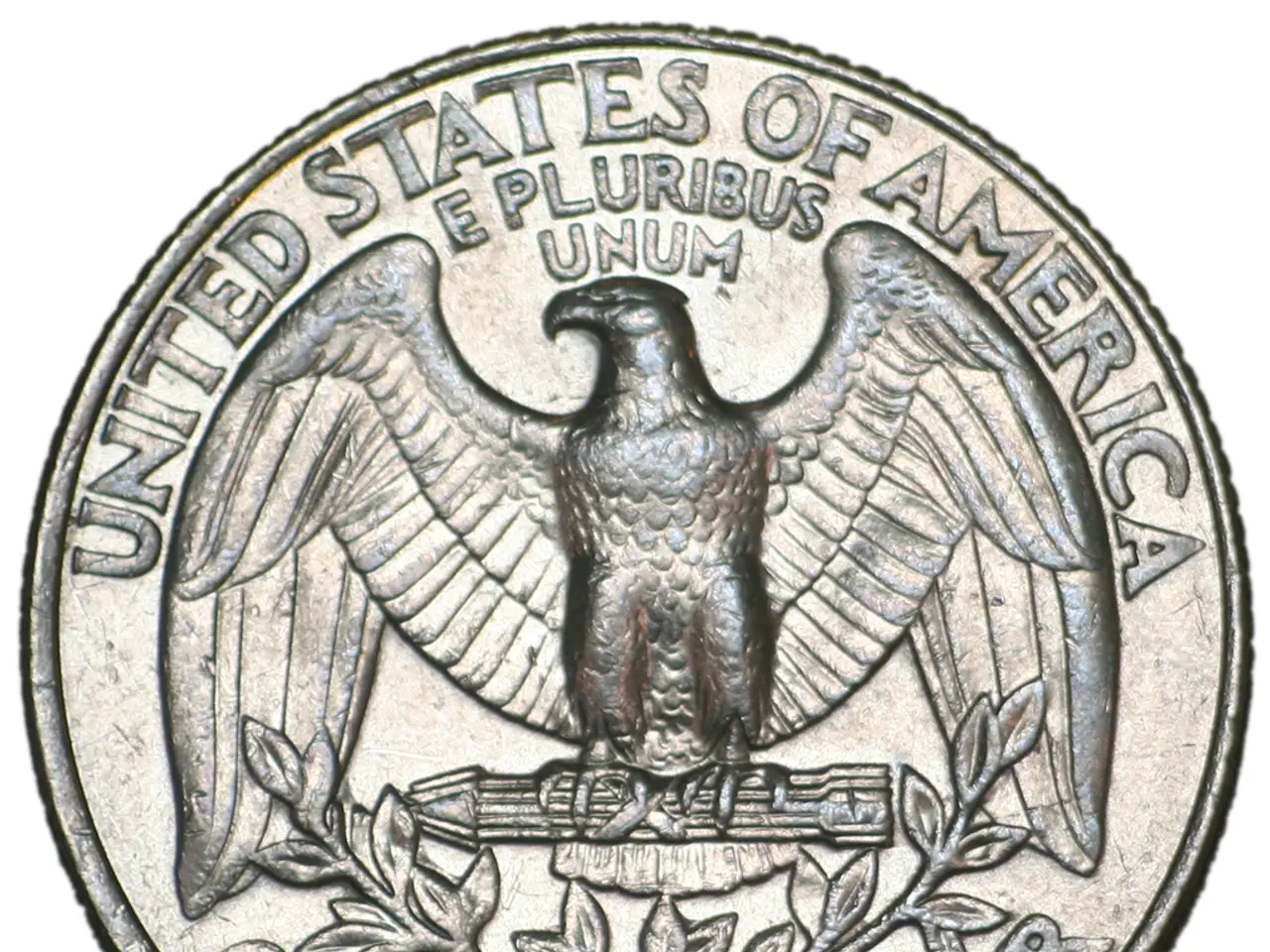Decrease in USDT Market Capitalization Observed Post MiCA Implementation
The Impact of MiCA on Large Stablecoin Issuers: A Closer Look at Tether
The European Union's Markets in Crypto-Assets (MiCA) regulation is reshaping the landscape of the stablecoin industry, particularly for large players like Tether. The new regulation imposes strict compliance requirements, financial burdens, and risks of market exclusion, which may lead to industry consolidation.
Financial burdens and compliance costs are a key aspect of MiCA. Stablecoin issuers are mandated to hold 1:1 liquid reserves in high-quality assets, maintain strong internal governance, and be authorized by EU regulators. This creates substantial costs related to maintaining transparent reserves, administering compliance procedures, and undergoing regulatory scrutiny.
Market access and operational restrictions are another significant impact. Non-MiCA-compliant stablecoins, such as Tether's USDT, face delisting from EU exchanges and restrictions on trading within the union. This effectively bars them from participating in the EU market, despite residents being allowed to hold these tokens. MiCA also bans algorithmic stablecoins, illustrating the regulatory rigor.
The new regulation is likely to cause industry consolidation and competitive shifts. MiCA's framework favors EU-compliant stablecoins, which already dominate 90% of the euro-based stablecoin market inside the EU. This sets the stage for increased market share by compliant issuers and pressure on non-compliant large issuers like Tether, which may struggle to meet local requirements or find licensing burdensome.
Regulatory gaps and systemic risks are also a concern. Despite MiCA’s strict rules for EU-based issuers, stablecoins issued outside the EU may still circumvent EU safeguards through regulatory arbitrage, causing systemic risks for EU financial institutions.
Tether, one of the largest stablecoin issuers, is projected to earn around $10 billion in profits this year. However, the company's CEO, Paolo Ardoino, has criticized MiCA, describing it as a "systemic risk" to stablecoins and the banking system. In December, Ardoino reiterated that MiCA could be seen as a "gift" to traditional financial institutions.
Uldis Teraudkalns, Chief Revenue Officer at Paybis, predicts that MiCA will transform the EU crypto landscape with far-reaching effects. He speculates that compliance costs could push out companies of any size, potentially benefiting jurisdictions like the UK and Switzerland. Teraudkalns believes that MiCA has the potential to enhance investor protection and reduce fraud risks, but he warns of increased costs leading to industry consolidation and reduced competition.
Despite these challenges, Tether has substantial cash reserves and diversified revenue streams, which may help it navigate the regulatory landscape. Agnė Lingė of WeFi stated that compliance with MiCA could be economically burdensome for large stablecoin issuers like Tether. However, she did not foresee significant financial consequences for Tether due to a potential EU exit. Lingė did not comment on the potential financial consequences for smaller stablecoin issuers due to the MiCA regulation.
Recently, European crypto exchanges such as Coinbase Europe have delisted USDT and five other stablecoins due to regulatory uncertainty. Binance and Crypto.com, on the other hand, have chosen to maintain support for these assets, awaiting further clarification on MiCA's requirements.
In conclusion, the MiCA regulation imposes substantial financial and compliance costs on large stablecoin issuers like Tether, limits their EU market access if non-compliant, and shifts the competitive landscape towards regulated, EU-based stablecoins. This regulatory environment is likely to drive industry consolidation favouring compliant stablecoin operators with robust governance and close ties to EU regulatory frameworks.
[1] European Central Bank (ECB), "MiCA: The EU's Regulation for Crypto-Assets," 2022. [2] Financial Stability Board (FSB), "MiCA: The EU's Regulation for Crypto-Assets," 2022. [3] International Monetary Fund (IMF), "MiCA: The EU's Regulation for Crypto-Assets," 2022. [4] European Commission, "MiCA: The EU's Regulation for Crypto-Assets," 2022. [5] CoinMarketCap, "Market Share of Euro-Based Stablecoins in the EU," 2022.
Crypto exchanges are facing difficult decisions in response to MiCA, with some, like Coinbase Europe, delisting non-compliant stablecoins, while others, such as Binance and Crypto.com, maintain support, awaiting further clarification.
The financial burdens and compliance costs associated with MiCA are expected to drive industry consolidation, favoring compliant stablecoin operators who have robust governance and close ties to EU regulatory frameworks, as the landscape shifts towards regulated, EU-based stablecoins.




